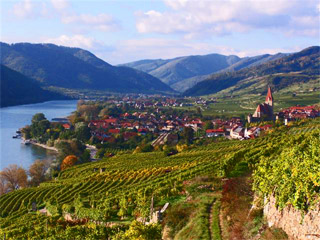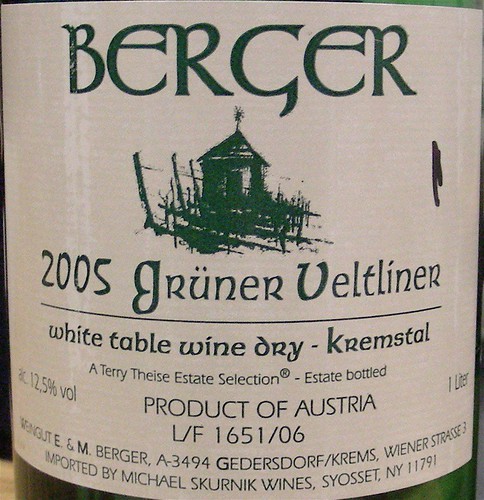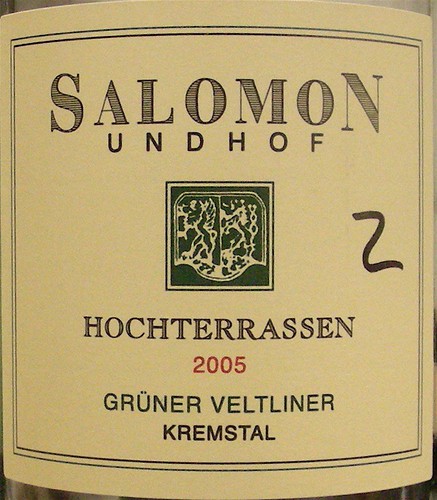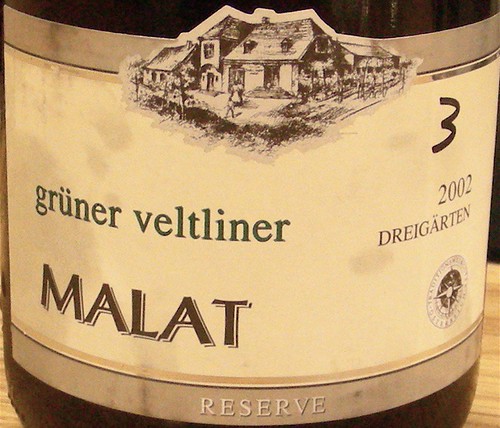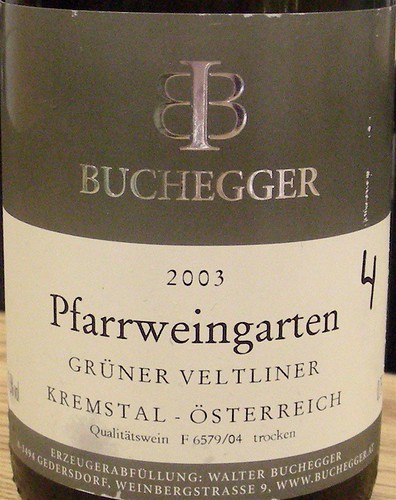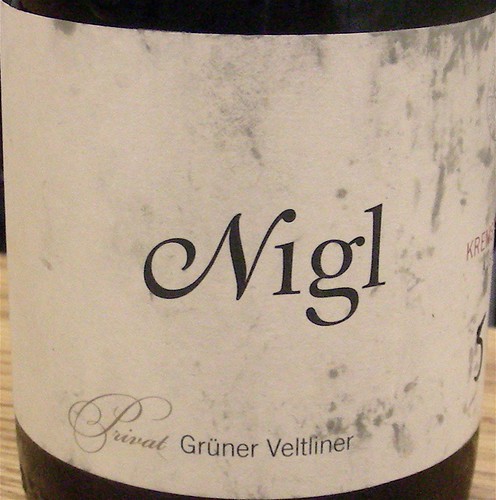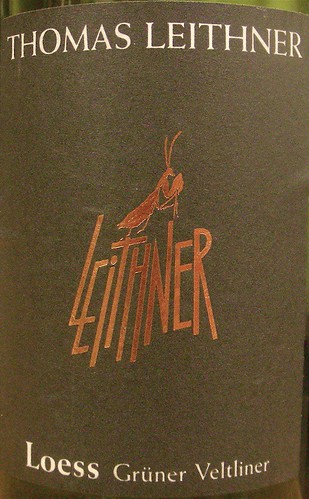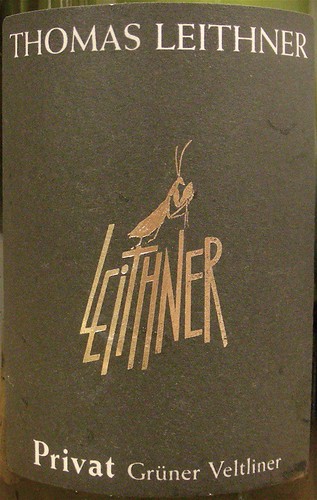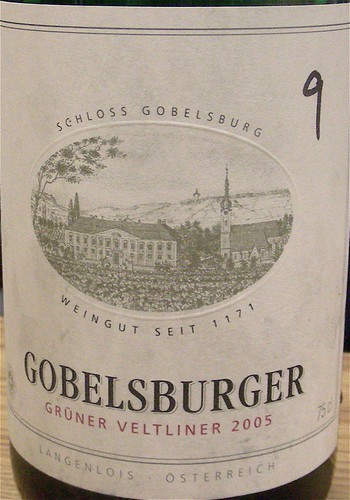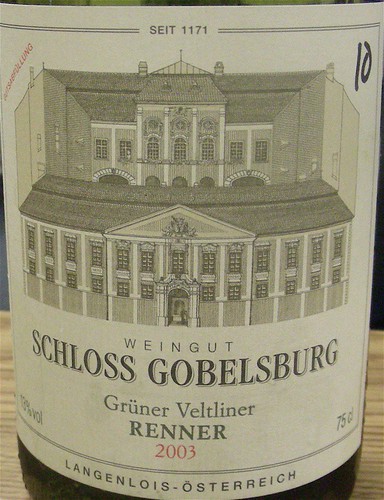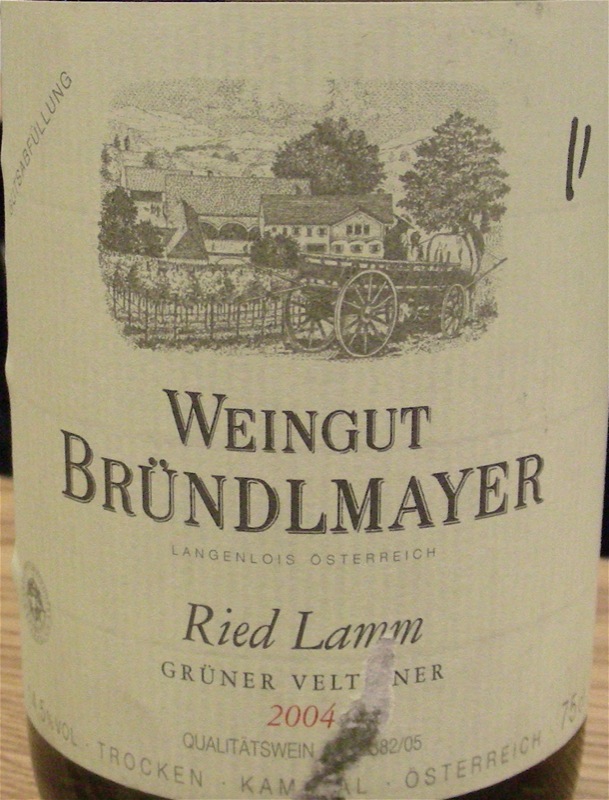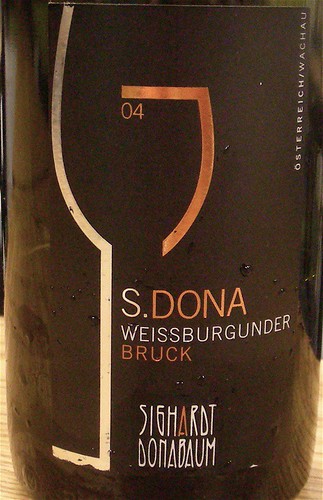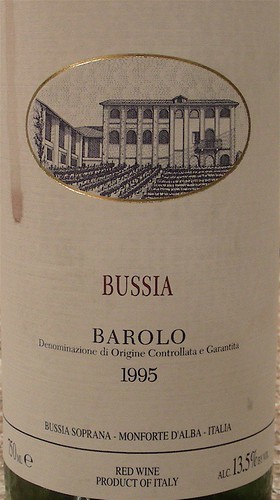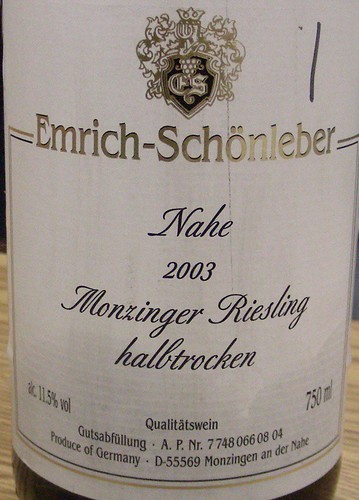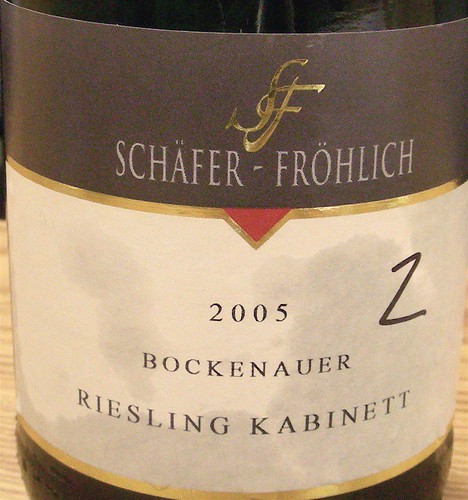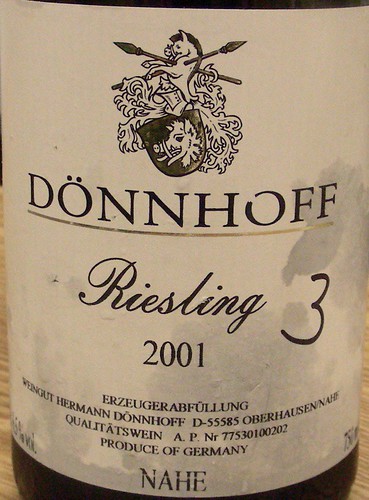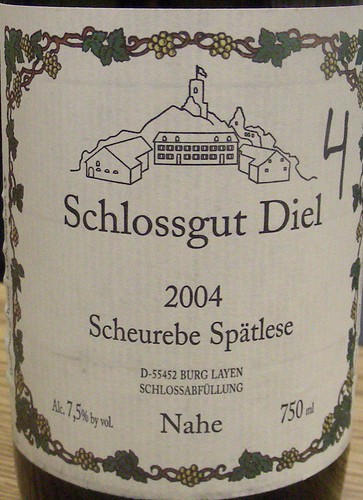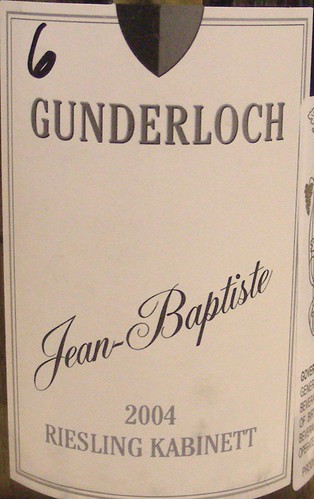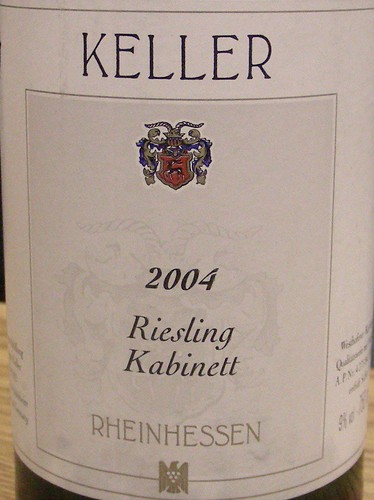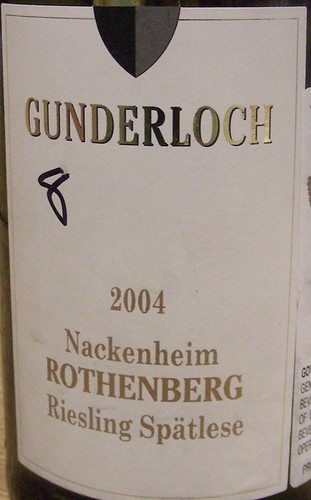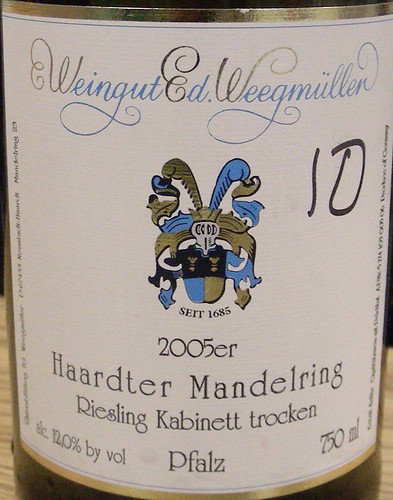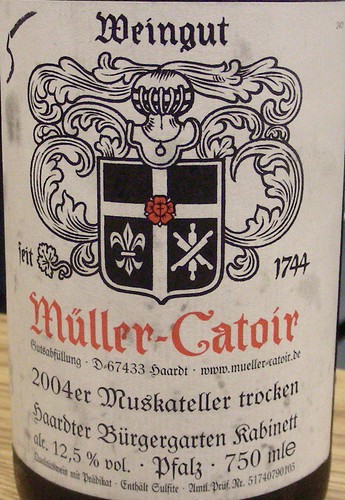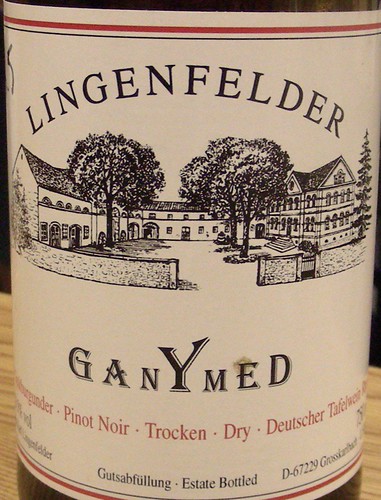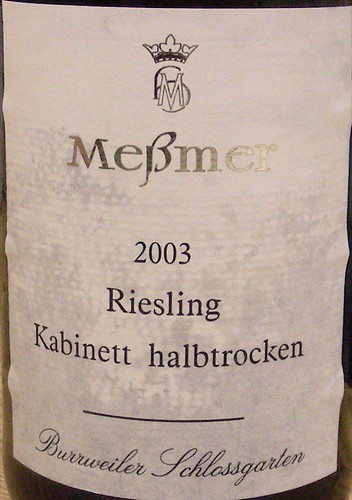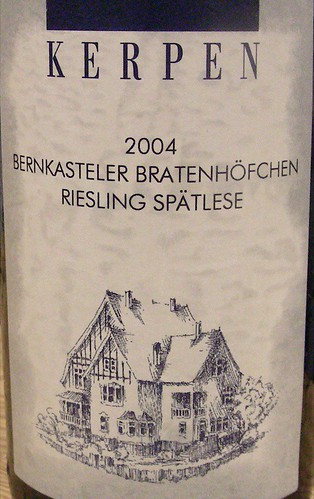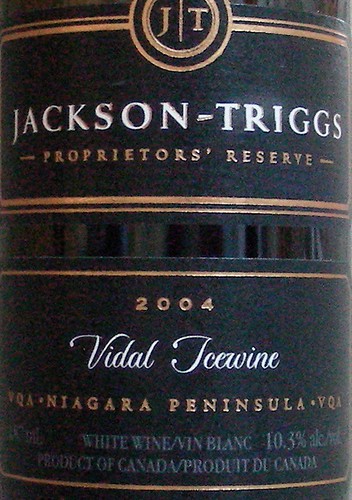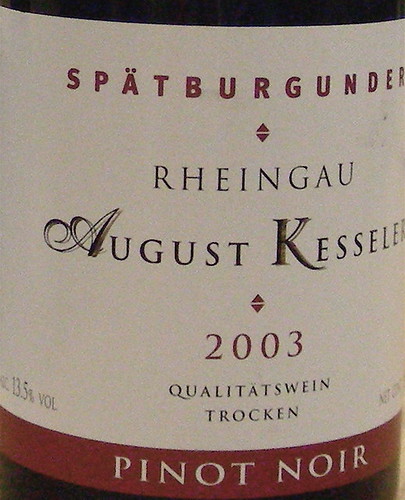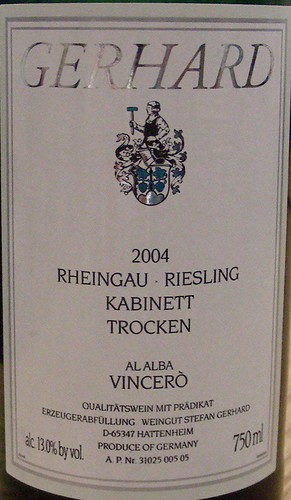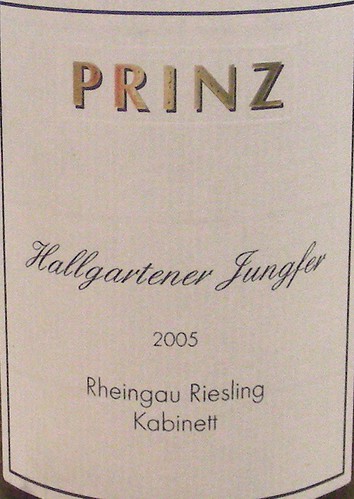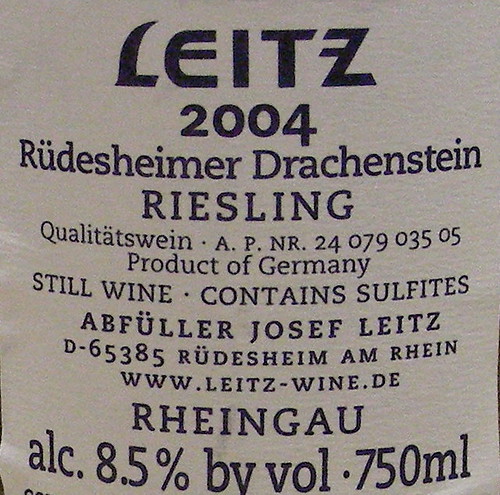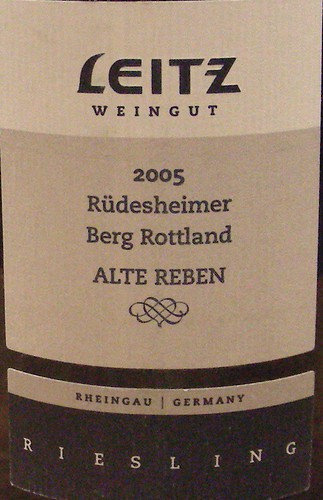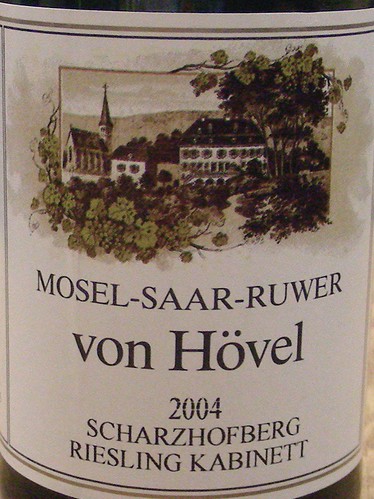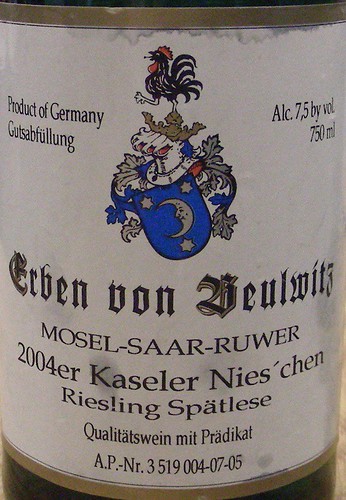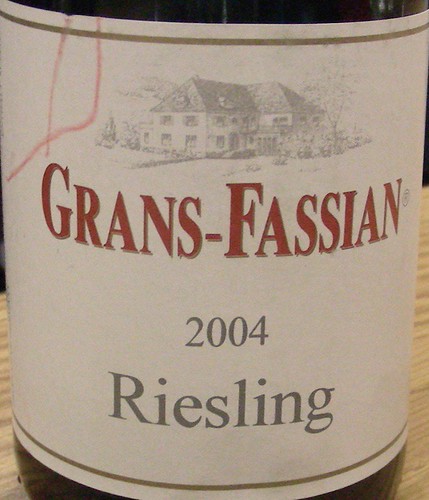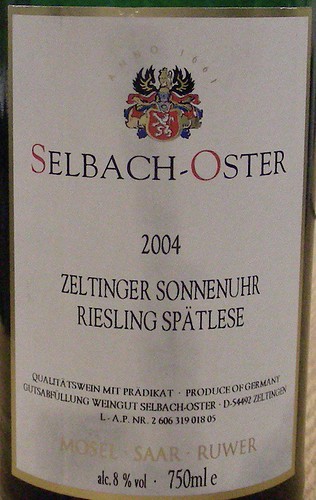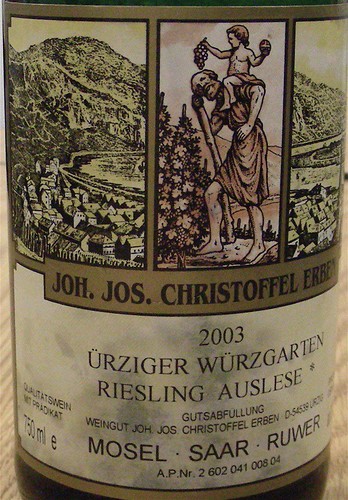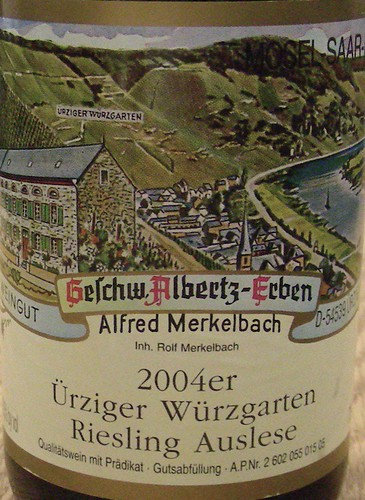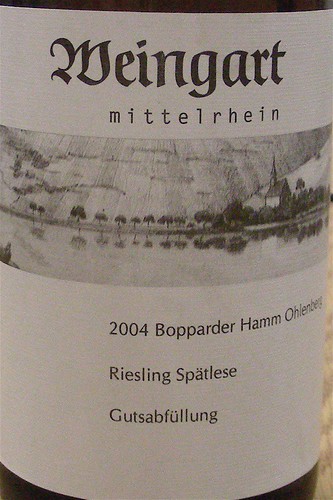Riesling is an ancient grape that had been cultivated since the 1400s in Germany. Well-suited to cold wine-growing regions, it also produces great wines in nearby Alsace and Austria. In North America, Riesling grows successfully in the Finger Lakes region of New York, Washington State, Oregon, California's coolest areas, and in Canada's Niagara Peninsula and British Columbia.
We tasted the following wines from Riesling:
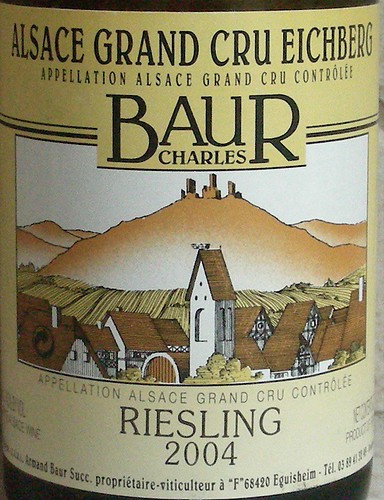 • 2004 Charles Baur Riesling Grand Cru Eichberg: founded in the early 18th century, the Domaine Charles Baur is a well established estate of 14 hectares in the town of Eguisheim on the Alsace wine road. The Eichberg vineyard is a classified Grand Cru. Its subsoil is rich in sandstone, silica, limestone and clay. From the Grand Cru Eichberg, the domaine cultivates 2.20 hectares of Muscat, Riesling, Pinot Gris, and Gewürztraminer. The Riesling had a light golden color and a fresh nose of stone fruit. On the palate, it was slightly sweet with mineral notes, a mouthfilling acidity, and a lengthy finish.
• 2004 Charles Baur Riesling Grand Cru Eichberg: founded in the early 18th century, the Domaine Charles Baur is a well established estate of 14 hectares in the town of Eguisheim on the Alsace wine road. The Eichberg vineyard is a classified Grand Cru. Its subsoil is rich in sandstone, silica, limestone and clay. From the Grand Cru Eichberg, the domaine cultivates 2.20 hectares of Muscat, Riesling, Pinot Gris, and Gewürztraminer. The Riesling had a light golden color and a fresh nose of stone fruit. On the palate, it was slightly sweet with mineral notes, a mouthfilling acidity, and a lengthy finish.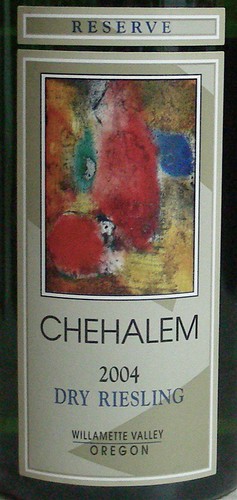 • 2004 Chehalem Reserve Dry Riesling Willamette Valley: according to the Chehalem winery, Riesling is the Pinot noir of white wines, the white wine the most reflective of climate and site. Their dry Riesling is produced in very limited quantities from selected estate lots in Oregon's Willamette Valley. The wine had a golden color with a light green hue, aromas of green apple, pear, honey, mixed unfortunately with some funky chemical notes. The palate had a good body but left some rustic flavors in the aftertaste.
• 2004 Chehalem Reserve Dry Riesling Willamette Valley: according to the Chehalem winery, Riesling is the Pinot noir of white wines, the white wine the most reflective of climate and site. Their dry Riesling is produced in very limited quantities from selected estate lots in Oregon's Willamette Valley. The wine had a golden color with a light green hue, aromas of green apple, pear, honey, mixed unfortunately with some funky chemical notes. The palate had a good body but left some rustic flavors in the aftertaste.Chenin Blanc is a native grape of the Loire Valley where it produces crisp table wines, light sparkling wines and unctuous dessert wines. Known as Steen, Chenin Blanc is also the most widely-grown grape in South Africa. It was first introduced to the Cape region in 1655 by Jan van Riebeeck, the Dutch founder of Cape Town. After being a base for cheap brandy and semi-sweet wines, Steen was finally identified in the 1960s as Chenin Blanc. Today, quality oriented South African winemakers are focusing on using old vines, keeping balanced yields and picking riper fruits.
We tasted the following wines from Chenin Blanc: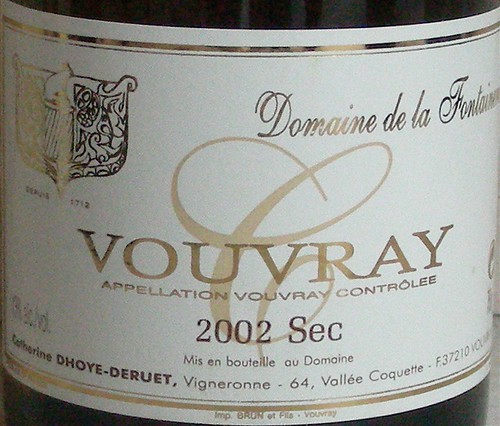 • 2002 Vouvray Sec Domaine de la Fontainerie Cuvée C: the Domaine de la Fontainerie in Vouvray has been around since 1712. The estate has five hectares in production and one more to be planted. The winery's cellars are carved under chalky slopes in the Vallée Coquette (Pretty Valley) near the town of Vouvray. The Cuvée C is a wine vinified dry and made only in great years. The wine was dry, mineral, and crisp with a touch of honey. On the palate, it had a great well-balanced structure and a lengthy finish. Overall, the wine was very distinctive and classy.
• 2002 Vouvray Sec Domaine de la Fontainerie Cuvée C: the Domaine de la Fontainerie in Vouvray has been around since 1712. The estate has five hectares in production and one more to be planted. The winery's cellars are carved under chalky slopes in the Vallée Coquette (Pretty Valley) near the town of Vouvray. The Cuvée C is a wine vinified dry and made only in great years. The wine was dry, mineral, and crisp with a touch of honey. On the palate, it had a great well-balanced structure and a lengthy finish. Overall, the wine was very distinctive and classy.
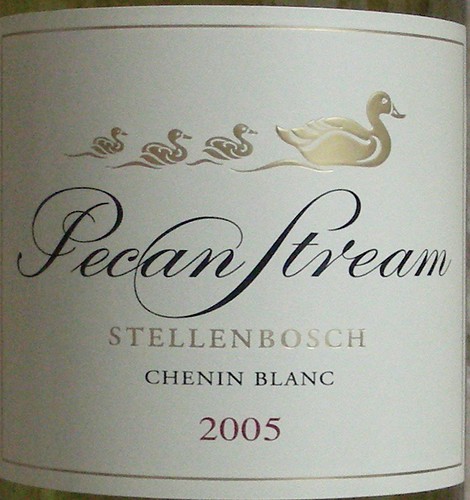 • 2005 Waterford Pecan Stream Chenin Blanc: Winemaker Kevin Arnold of Waterford Estate sources the grapes for his Pecan Stream wines from local growers. The wine had a bright golden color and cooked apple aromas on the nose. On the palate, it was slightly sweet and fruity. Although not as elegant as the Vouvray, it was a well crafted wine and a great value.
• 2005 Waterford Pecan Stream Chenin Blanc: Winemaker Kevin Arnold of Waterford Estate sources the grapes for his Pecan Stream wines from local growers. The wine had a bright golden color and cooked apple aromas on the nose. On the palate, it was slightly sweet and fruity. Although not as elegant as the Vouvray, it was a well crafted wine and a great value.
Pinot Noir has been cultivated in Burgundy since the Roman Era. Today, it is widely planted in many different countries around the world. In the new world, it is enjoying a recent increase in popularity, thanks to the movie Sideways. Although New Zealand is a relative new comer to the production of Pinot Noir, the grape is now considered, after Sauvignon Blanc, to be New Zealand's red wine major success.
We tasted the following wines from Pinot Noir: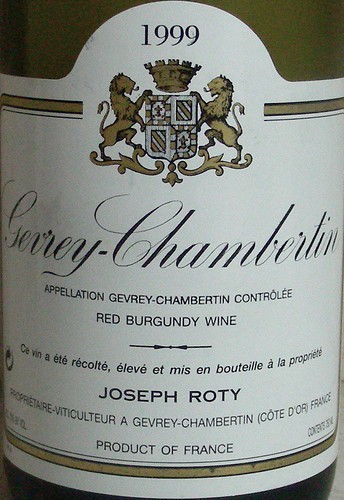 • 1999 Gevrey-Chambertin Champs Chenys Domaine Joseph Roty: Joseph Roty, considered one of Burgundy's finest winemakers, owns 12 hectares in the villages of Gevrey-Chambertin and Marsannay. Champs Chenys is one of the village appellation of Gevrey-Chambertin, which is itself the largest appellation in Burgundy's Côte de Nuits. The wine had a medium ruby color and a nose of sour cherry fruit. On the palate, it was smoky, earthy, with lots of acidity and a bit hollow on the mid-palate.
• 1999 Gevrey-Chambertin Champs Chenys Domaine Joseph Roty: Joseph Roty, considered one of Burgundy's finest winemakers, owns 12 hectares in the villages of Gevrey-Chambertin and Marsannay. Champs Chenys is one of the village appellation of Gevrey-Chambertin, which is itself the largest appellation in Burgundy's Côte de Nuits. The wine had a medium ruby color and a nose of sour cherry fruit. On the palate, it was smoky, earthy, with lots of acidity and a bit hollow on the mid-palate. 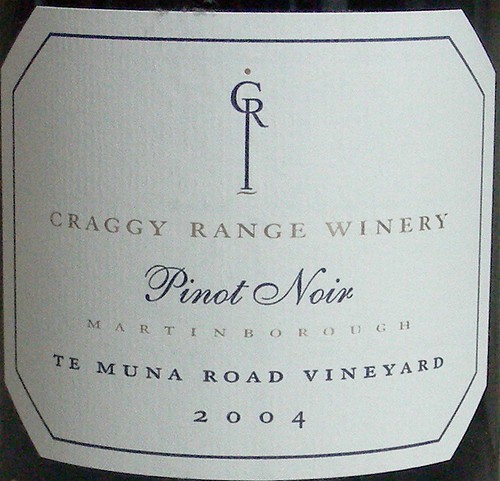 • 2004 Craggy Range Pinot Noir Te Muna Road Vineyard Martinborough: the Craggy Range Winery is located in Hawke's Bay on the east coast of the North island, and has been named for the nearby Craggy Range Mountains. For its Pinot Noir production, Craggy Range cultivates the Te Muna Road vineyard in Martinborough, at the south end of the North Island. The vineyard has currently 130 acres planted in Sauvignon Blanc, 15 in Chardonnay, 5 in Riesling and 80 in Pinot Noir. The wine had a medium ruby color, a fragrant and fruit driven nose. One the palate, it had a savory mouthfeel, earthy flavors, some good acidity, leaving a finish of pepper and licorice. This was a very popular wine among the tasters.
• 2004 Craggy Range Pinot Noir Te Muna Road Vineyard Martinborough: the Craggy Range Winery is located in Hawke's Bay on the east coast of the North island, and has been named for the nearby Craggy Range Mountains. For its Pinot Noir production, Craggy Range cultivates the Te Muna Road vineyard in Martinborough, at the south end of the North Island. The vineyard has currently 130 acres planted in Sauvignon Blanc, 15 in Chardonnay, 5 in Riesling and 80 in Pinot Noir. The wine had a medium ruby color, a fragrant and fruit driven nose. One the palate, it had a savory mouthfeel, earthy flavors, some good acidity, leaving a finish of pepper and licorice. This was a very popular wine among the tasters.
Malbec is one of the traditional Bordeaux varietals. Although plantings in the Medoc have decreased by over two-thirds since the mid-twentieth century, Malbec is still the dominant red varietal in the Cahors area in the South-West wine region of France where the Cahors Appellation requires a minimum of 70% Malbec. Malbec is widely planted in Argentina, showing its best characteristics in the Mendoza wine region. It has quickly become the country's premier grape with 25,000 hectares planted. In comparison, Chile has about 6,000 hectares planted and France 5,300 hectares.
We tasted the following wines from Malbec: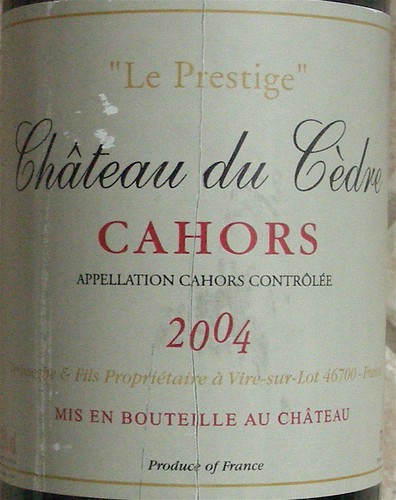 • 2004 Cahors Château du Cèdre Cuvée Le Prestige: Founded in 1956 by Charles Verhaeghe, Château du Cèdre is one of Cahors's leading wineries. It is now owned and run by brothers Pascal and Jean-Marc Verhaeghe, who have been a driving force behind the improved quality of the wines of Cahors. The 25 hectares estate has vineyards planted on the best two types of soils of the appellation: clay-limestone with stones and reddish sand with pebbles on the top, clay and flint on the subsoil. The cuvée Le Prestige is a blend of Malbec and Tannat and aged in new oak barrels. The wine had a dark, purple-black color, an attractive nose of black and red berries. On the palate, it had a seductive mouthfeel with a fresh acidity and well-balanced tannins, leaving a lengthy finish. This was a really delicious wine.
• 2004 Cahors Château du Cèdre Cuvée Le Prestige: Founded in 1956 by Charles Verhaeghe, Château du Cèdre is one of Cahors's leading wineries. It is now owned and run by brothers Pascal and Jean-Marc Verhaeghe, who have been a driving force behind the improved quality of the wines of Cahors. The 25 hectares estate has vineyards planted on the best two types of soils of the appellation: clay-limestone with stones and reddish sand with pebbles on the top, clay and flint on the subsoil. The cuvée Le Prestige is a blend of Malbec and Tannat and aged in new oak barrels. The wine had a dark, purple-black color, an attractive nose of black and red berries. On the palate, it had a seductive mouthfeel with a fresh acidity and well-balanced tannins, leaving a lengthy finish. This was a really delicious wine. 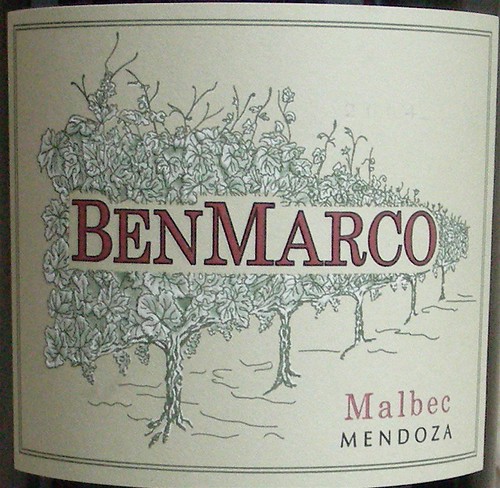 • 2004 BenMarco Malbec: The Dominio del Plata Winery is a family-owned and run project of Susana Balbo, the winery's enologist and Pedro Marchevsky the winery's viticulturist. BenMarco is Pedro's surname which means son of Marco in Hebrew. The BenMarco label is an homage to his father, Marcos, who taught him how to plant, tend, and love the vineyards. The wine had a jammy nose of black fruit. On the palate, it was dense and meaty leaving a slightly too oaky finish.
• 2004 BenMarco Malbec: The Dominio del Plata Winery is a family-owned and run project of Susana Balbo, the winery's enologist and Pedro Marchevsky the winery's viticulturist. BenMarco is Pedro's surname which means son of Marco in Hebrew. The BenMarco label is an homage to his father, Marcos, who taught him how to plant, tend, and love the vineyards. The wine had a jammy nose of black fruit. On the palate, it was dense and meaty leaving a slightly too oaky finish.
The theme of our next event will be Champagne so stay tuned!
Technorati tags: wine food & drink
